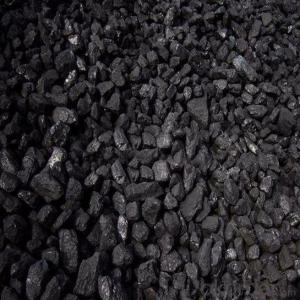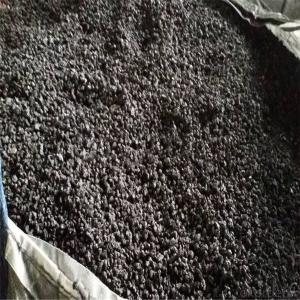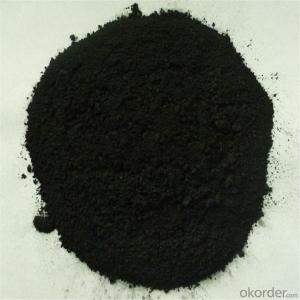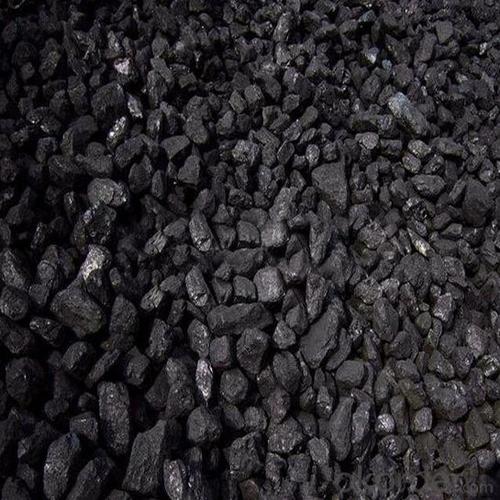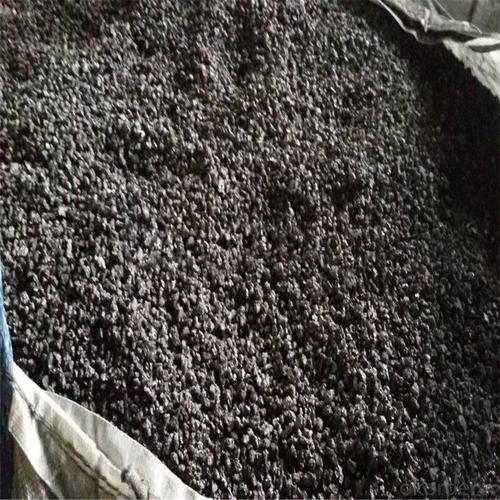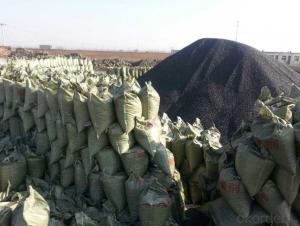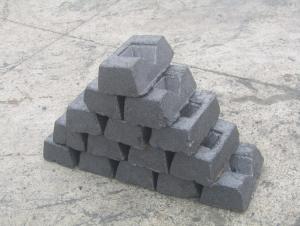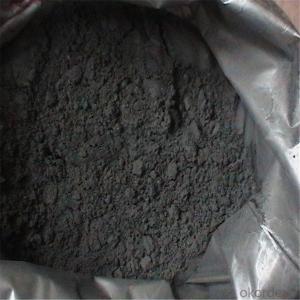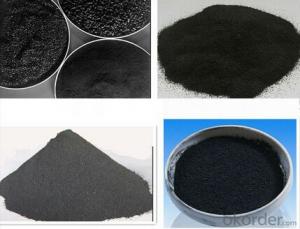Graphite powder Graphite Recarburizer High Carbon Low Sulphur For Metals Casting
- Loading Port:
- Dalian
- Payment Terms:
- TT OR LC
- Min Order Qty:
- 10 m.t
- Supply Capability:
- 500000 m.t/month
OKorder Service Pledge
OKorder Financial Service
You Might Also Like
Specifications of graphite powder:
- 98%-99% graphite powder
- high fixed carbon
- low sulphur and nitrogen
- ten year experience in processing of graphite products
- Graphite powder / Graphite carburant
Graphite powder purposes:
- As non-metallic mineral resources, has important defense strategic role
- Can be used for high and new technical projects, is of great economic and social benefits
- Is the metallurgical industry refractory material
- Is the chemical industry all kinds of corrosion of vessels, general equipment of carbon products
- Light industry is in pencil, ink and the main raw material of artificial diamond
- Is the electrical industry production carbon electrode and electrode carbon rods, battery materials
Graphite powder data sheet:
Our carbon additive has the features of high carbon, low sulphur, nitrogen and harmful impurities. So it has been widely used for steel-smelting, casting, brake pedal and friction material. | |||||||
Data sheet | |||||||
Product No. | Fixed Carbon | Sulphur | Ash | Volatile Matter | Moisture | Particle Size | Nitrogen Content |
Min | Max | Max | Max | Max | 90% | Max | |
HY-CA-01 | 98.5% | 0.50% | 0.80% | 0.80% | 0.50% | 1-5MM | N/A |
HY-CA-02 | 99.00% | 0.30% | 0.50% | 0.50% | 0.50% | 1-5MM | 100PPM |
HY-CA-03 | 98.50% | 0.05% | 0.80% | 0.70% | 0.50% | 0.3-5MM | 300PPM |
HY-CA-04 | 95.00% | 0.30% | 3.50% | 1.50% | 0.50% | 1-4MM | 700PPM |
HY-CA-05 | 99.00% | 0.03% | 0.50% | 0.50% | 0.50% | 0.3-5MM | 300PPM |
HY-CA-06 | 80.00% | 0.10% | 16.50% | 3.50% | 2.00% | 1-5MM | N/A |
Remark:The above mentioned grain sizes are recommended standard, if your have special requirements, please feel free to contact us. | |||||||

- Q: What's the reason for grading? What about the use of composites? What's the difference?
- 1, carbon fiber has a benzene ring structure, making it difficult to rotate the molecular chain. A polymer molecule cannot fold and stretch to form a rodlike structure, thus giving fibers a high modulus.The linear structure of carbon fiber polymers allows molecules to be arranged so closely that a large number of polymer molecules can be accommodated in a unit volume. This high density makes the fibers stronger.
- Q: How does carbon dioxide affect global warming?
- Carbon dioxide is one of the primary greenhouse gases responsible for global warming. When released into the atmosphere, carbon dioxide traps heat from the sun and prevents it from escaping back into space, thus leading to an increase in the Earth's overall temperature. This phenomenon is often referred to as the greenhouse effect, where the Earth's atmosphere acts like the glass walls of a greenhouse, trapping heat and warming the planet. Human activities, such as burning fossil fuels for energy, deforestation, and industrial processes, have significantly increased the concentration of carbon dioxide in the atmosphere. These activities have released vast amounts of carbon dioxide that would have otherwise remained stored underground for millions of years. As a result, the concentration of carbon dioxide in the atmosphere has reached levels unseen for hundreds of thousands of years. The increase in carbon dioxide levels enhances the greenhouse effect and intensifies global warming. Rising temperatures have various adverse effects on the Earth's climate system. They contribute to the melting of polar ice caps and glaciers, leading to rising sea levels. This process threatens coastal communities and low-lying areas with increased risk of flooding and coastal erosion. Additionally, global warming disrupts weather patterns, leading to more frequent and severe extreme weather events, such as hurricanes, droughts, and heatwaves. Furthermore, global warming affects ecosystems and biodiversity. Many species are unable to adapt to rapid changes in temperature, resulting in habitat loss and an increased risk of extinction. Coral reefs, for example, are highly sensitive to temperature changes and are experiencing widespread bleaching events due to increased ocean temperatures. To mitigate the effects of carbon dioxide on global warming, efforts are being made to reduce greenhouse gas emissions. Transitioning to renewable energy sources, improving energy efficiency, reforestation, and implementing sustainable practices are some of the measures being taken to curb carbon dioxide emissions and mitigate the impacts of global warming.
- Q: What are carbon credits?
- The aim of carbon credits is to lessen greenhouse gas emissions and combat climate change by using a market-based mechanism. These credits measure and quantify the reduction, removal, or avoidance of one metric ton of carbon dioxide (or its equivalent) from being released into the atmosphere. The concept behind carbon credits is rooted in the belief that certain activities or projects can offset the emissions caused by other activities. For example, renewable energy projects like wind farms or solar power plants can generate carbon credits by replacing the need for fossil fuel-based electricity generation. Similarly, projects focused on reforestation or afforestation can absorb carbon dioxide from the atmosphere and generate credits. These carbon credits can be purchased and sold in the carbon market, enabling companies or individuals to compensate for their own emissions by buying credits from projects that have successfully reduced or removed carbon dioxide from the atmosphere. This supports environmentally friendly initiatives and contributes to the overall reduction of greenhouse gases. The carbon credit system functions by creating financial incentives for activities that reduce emissions. It encourages businesses to invest in cleaner technologies and practices by assigning a monetary value to the reduction of carbon emissions. This drives the transition to a low-carbon economy and promotes sustainable development. Carbon credits play a crucial role in international efforts to tackle climate change. They are often used as a compliance mechanism for countries or companies to meet their emission reduction targets, as outlined in international agreements like the Kyoto Protocol or the Paris Agreement. Additionally, they contribute to the overall objective of limiting global temperature rise by encouraging emission reductions beyond regulatory requirements. While carbon credits have faced criticism for potentially allowing companies to continue polluting by simply purchasing credits, they remain an important tool in the fight against climate change. They provide economic benefits to sustainable projects and encourage the adoption of cleaner technologies, ultimately helping to mitigate the environmental impact of human activities.
- Q: What are the different allotropes of carbon?
- Carbon has several allotropes, each possessing unique physical and chemical properties. The most renowned allotrope is diamond, renowned for its hardness and brilliance. Diamond consists of carbon atoms arranged in a three-dimensional structure, with each atom bonded to four neighboring carbon atoms in a tetrahedral pattern. Graphite is another carbon allotrope, known for its softness and ability to conduct electricity. Carbon atoms in graphite are arranged in layers that are held together by weak forces, allowing easy sliding between layers. This layered arrangement grants graphite its lubricating properties. Fullerenes, a distinct class of carbon allotropes, are composed of carbon atoms arranged in closed cage-like structures. The most famous fullerene is buckminsterfullerene (C60), made up of 60 carbon atoms bonded together to form a hollow sphere resembling a soccer ball. Fullerenes exhibit unique properties such as high tensile strength and superconductivity. Carbon nanotubes, cylindrical structures made from rolled-up graphene sheets, are yet another carbon allotrope. The arrangement of carbon atoms determines the structure and properties of carbon nanotubes. They are recognized for their exceptional strength, electrical conductivity, and thermal conductivity. Amorphous carbon, lacking a definite crystal structure, is another carbon allotrope. It is commonly found in substances like soot, coal, and charcoal. Amorphous carbon can possess a wide range of properties based on its structure, varying from soft and powdery to hard and brittle. These examples highlight the diverse allotropes of carbon. Carbon's ability to form various allotropes with distinct properties contributes to its significance in numerous applications, including jewelry, electronics, and material science.
- Q: What are the consequences of increased carbon emissions on coral reefs?
- Coral reefs are severely impacted by the increased emission of carbon, resulting in numerous consequences. One major effect is the occurrence of ocean acidification, which happens when excess carbon dioxide is absorbed by seawater, causing a decrease in pH levels. This acidification hampers the ability of corals to construct their calcium carbonate skeletons, making them more susceptible to erosion and breakage. Moreover, elevated levels of carbon dioxide in the atmosphere contribute to global warming, leading to the rise of ocean temperatures. Consequently, coral bleaching occurs as corals expel the symbiotic algae responsible for their vibrant colors. Without these algae, corals become stressed, lose their color, and become more vulnerable to disease and death. Additionally, increased carbon emissions contribute to alterations in ocean currents and weather patterns, resulting in more frequent and intense storms. These storms physically damage coral reefs, causing further destruction to already fragile ecosystems. The consequences of increased carbon emissions on coral reefs are profound and devastating. The decline of coral reefs not only impacts the biodiversity of the oceans but also has significant implications for human populations that rely on reefs for sustenance, income, coastal protection, and tourism. It is imperative to reduce carbon emissions and take immediate action to safeguard and preserve these invaluable ecosystems.
- Q: What are the different types of carbon-based polymers?
- Carbon-based polymers come in various types, each possessing unique properties and applications. Some commonly encountered variants include: 1. Polyethylene (PE): Esteemed for its exceptional strength and chemical resistance, PE is extensively utilized in packaging materials, plastic bottles, and pipes. 2. Polypropylene (PP): PP is akin to PE, but it boasts a higher melting point and superior heat resistance. This makes it a popular choice for automotive parts, textiles, and food packaging. 3. Polystyrene (PS): PS is a lightweight and rigid polymer frequently employed in packaging materials, disposable utensils, and insulation. 4. Polyvinyl chloride (PVC): PVC is a versatile polymer that can be either rigid or flexible based on the additives employed. It finds common application in pipes, electrical insulation, and flooring. 5. Polyethylene terephthalate (PET): PET is a robust and lightweight polymer commonly found in beverage bottles, food containers, and synthetic fibers. 6. Polyurethane (PU): PU is a flexible and durable polymer utilized in foams, coatings, adhesives, and textiles. 7. Polycarbonate (PC): PC is a robust and transparent polymer regularly utilized in eyeglass lenses, safety goggles, and electronic components. 8. Phenolic resins: Renowned for their exceptional heat resistance, these polymers are commonly employed in coatings, adhesives, and electrical components. These examples represent only a fraction of the diverse range of carbon-based polymers available. Each type possesses specific properties and applications, rendering them suitable for a wide array of industries and products.
- Q: Iron and steel are different in terms of carbon content
- That is, high manganese content, less nickel or nickel free stainless steel. This stainless steel market costs more than 1000 yuan per ton of stainless steel with nickel. Some dealers is the use of good people are not on the stainless steel magnet suction misunderstanding, to deceive consumers, so the price as high with expensive stainless steel.There are more than 100 kinds of stainless steel, and the characteristics and functions are different. General decoration, landscape, sculpture using austenitic stainless steel. Because of the low thermal conductivity of austenitic stainless steel, using it as a kettle, wok, rice cooker is not appropriate, will use a lot of energy, but also to extend the boiling water cooking time. Using ferritic stainless steel as a wok and rice cooker, not only has excellent corrosion resistance, but also its thermal conductivity is nearly half higher than that of austenitic stainless steel.
- Q: How does carbon dioxide affect climate change?
- Climate change is significantly influenced by carbon dioxide (CO2), a greenhouse gas. CO2 is released into the atmosphere through natural processes like volcanic eruptions or human activities such as burning fossil fuels. Its presence in the atmosphere traps heat from the sun, preventing it from escaping back into space. This phenomenon is known as the greenhouse effect. Human activities, particularly the burning of fossil fuels like coal, oil, and natural gas, have led to an imbalance in the natural carbon cycle. This has caused an increase in CO2 concentration in the atmosphere, resulting in a rapid rise in global CO2 levels. Consequently, the Earth's surface is warming, and climate patterns are changing. Since the Industrial Revolution, the burning of fossil fuels has significantly elevated atmospheric CO2 levels, leading to an increase in the Earth's average temperature. This temperature rise impacts various aspects of the climate system, causing a range of effects. One of the most visible outcomes of increased CO2 levels is global warming. This warming leads to the melting of glaciers and polar ice, which in turn raises sea levels. Rising sea levels pose a threat to coastal areas and low-lying islands, causing increased flooding, coastal erosion, and potential displacement of communities. Moreover, elevated CO2 levels contribute to more frequent and intense heatwaves, droughts, and wildfires in many regions. These extreme weather events negatively affect agriculture, water availability, and human health. Carbon dioxide also disrupts ecosystems by altering the growth patterns and distribution of plant and animal species. Changes in temperature and precipitation patterns, driven by increased CO2 levels, disturb the delicate balance of life, leading to biodiversity loss and potential species extinction. To mitigate the impacts of CO2 on climate change, it is crucial to reduce greenhouse gas emissions. Transitioning to renewable energy sources, improving energy efficiency, and adopting sustainable practices are important steps in reducing CO2 emissions and limiting the extent of climate change. Additionally, efforts to restore and protect forests and other natural carbon sinks can help absorb and store CO2, thus mitigating its effects on the climate.
- Q: What is carbon offsetting in the food industry?
- Carbon offsetting in the food industry refers to the practice of neutralizing or compensating for the greenhouse gas emissions associated with food production and distribution processes. It is a way for food companies to take responsibility for their carbon footprint and contribute to global efforts in mitigating climate change. Food production and distribution contribute significantly to greenhouse gas emissions, mainly through activities such as deforestation, land use changes, energy consumption, and transportation. Carbon offsetting allows companies in the food industry to invest in projects or initiatives that reduce or remove an equivalent amount of carbon dioxide from the atmosphere, effectively balancing out their emissions. There are various methods of carbon offsetting in the food industry. One common approach is investing in renewable energy projects, such as wind farms or solar power installations, to offset the emissions produced from energy consumption in food processing facilities or transportation. Another method is supporting projects that promote sustainable agriculture practices, such as reforestation or afforestation efforts, which can sequester carbon dioxide from the atmosphere. Carbon offsetting in the food industry also extends to supply chain management. Companies can work with their suppliers to implement more sustainable farming practices, reduce waste, and optimize transportation routes to minimize emissions. By collaborating with farmers, producers, and distributors, food companies can collectively work towards reducing their overall carbon footprint and achieving carbon neutrality. It is important to note that carbon offsetting should not be seen as a substitute for reducing emissions at the source. Instead, it should be viewed as a complementary measure to support the transition towards more sustainable and low-carbon practices in the food industry. By offsetting their emissions, food companies can demonstrate their commitment to environmental stewardship and contribute to the global fight against climate change.
- Q: Consult the carbon content of austenite
- It only refers to the iron carbon two element alloy, and the other alloys are different.
Send your message to us
Graphite powder Graphite Recarburizer High Carbon Low Sulphur For Metals Casting
- Loading Port:
- Dalian
- Payment Terms:
- TT OR LC
- Min Order Qty:
- 10 m.t
- Supply Capability:
- 500000 m.t/month
OKorder Service Pledge
OKorder Financial Service
Similar products
Hot products
Hot Searches
Related keywords
